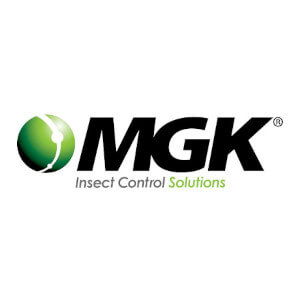At MGK, we are proud to develop a broad portfolio of insect control products based primarily on natural pyrethrum, and in addition to many other active ingredients. One of the most common questions we get is, “what is the difference between pyrethrins and pyrethroids?”
There are a variety of py-words out there: pyrethrum, pyrethrins, permethrin, pyrethroids – so let’s break it all down:
- Pyrethrum and pyrethrins are insecticides extracted from certain species of flowers in the chrysanthemum family.
- Pyrethrins are the 6 active molecules – or esters – that act as the killing agent in the extract.
- Pyrethrum is the total extract from the flowers, while pyrethrins are the refined 6 esters.
- Pyrethroids are synthetic compounds produced to mimic the effects of the pyrethrin esters.
- Pyrethroids contain fewer chemical variants, usually 1 synthetic molecule as opposed to the 6 esters in pyrethrum.
- Pyrethrins are broad spectrum and kill a wide variety of insects, while pyrethroids tend to have longer residual effects and increased stability in storage.
Pyrethrins
Botanical pyrethrins are made up of six active molecules called esters: Pyrethrins I & II, Jasmolin I & II, and Cinerin I & II. The concentration of the 6 molecules vary in the total pyrethrum extract and can be different each time the flower is harvested. Environmental conditions like rainfall, temperature, and humidity are just a few of the factors that affect the change in esters within the pyrethrum extract.
Pyrethrins have long been utilized for their insecticidal properties. Pyrethrins are susceptible to UV degradation and provide shorter residual control but induce a ‘flushing’ behavior from target insects.
Pyrethroids
Pyrethroids are synthetic, modified versions of pyrethrins and contain fewer chemical variants. Pyrethroids usually contain only 1 molecule that mimics a single natural pyrethrin ester.
Alternative to the variation provided by pyrethrum, pyrethroid molecules are produced the same way every time and as a result, do not induce the same ‘flushing’ behavior. Additionally, pyrethroids tend to provide longer residual control, as they are less susceptible than pyrethrins to degradation by UV light.
A Different Perspective
Every time pyrethrum is harvested from the flower, a different concentration of the 6 esters – or killing agents – is included in the extract. Compare this to having a cup of coffee or glass of wine in different parts of the world; it will taste different based on where the coffee bean or grape was grown because of the environmental conditions.
As discussed, a pyrethroid will contain the same compound each time it is produced, like how a name brand soda will taste the same across the world. As a result of the lack in variance in synthetic pyrethroids, insects can develop insecticide resistance to pyrethroids more quickly than pyrethrins.

